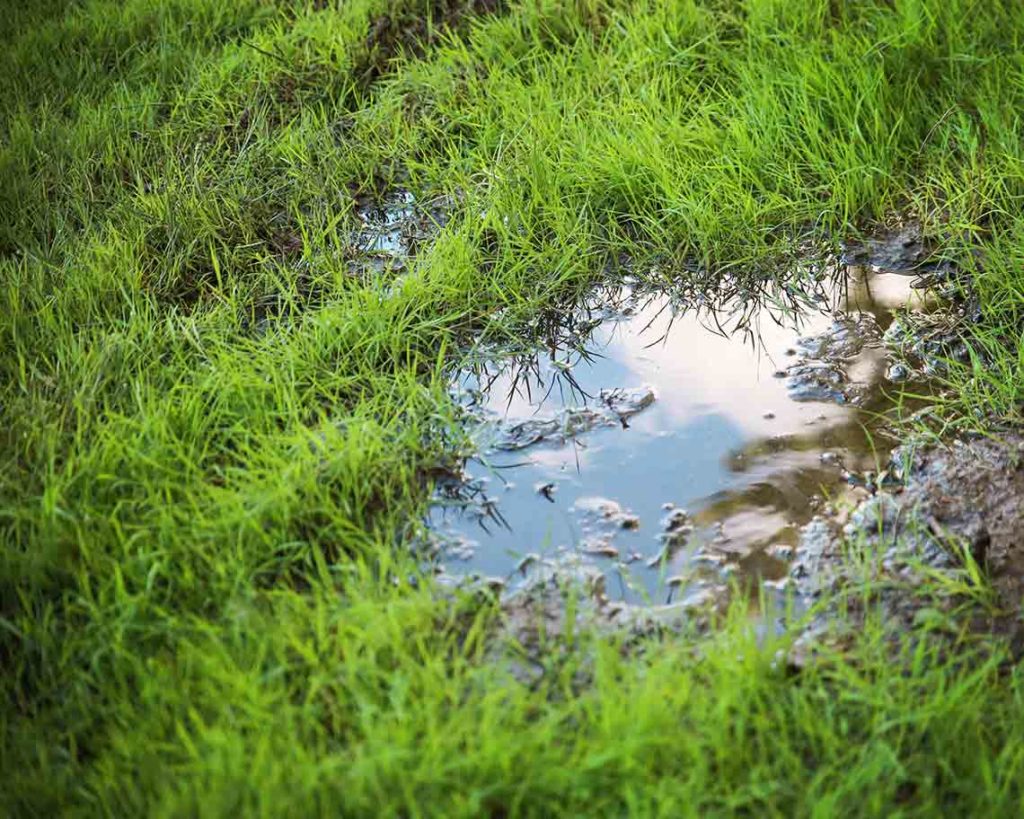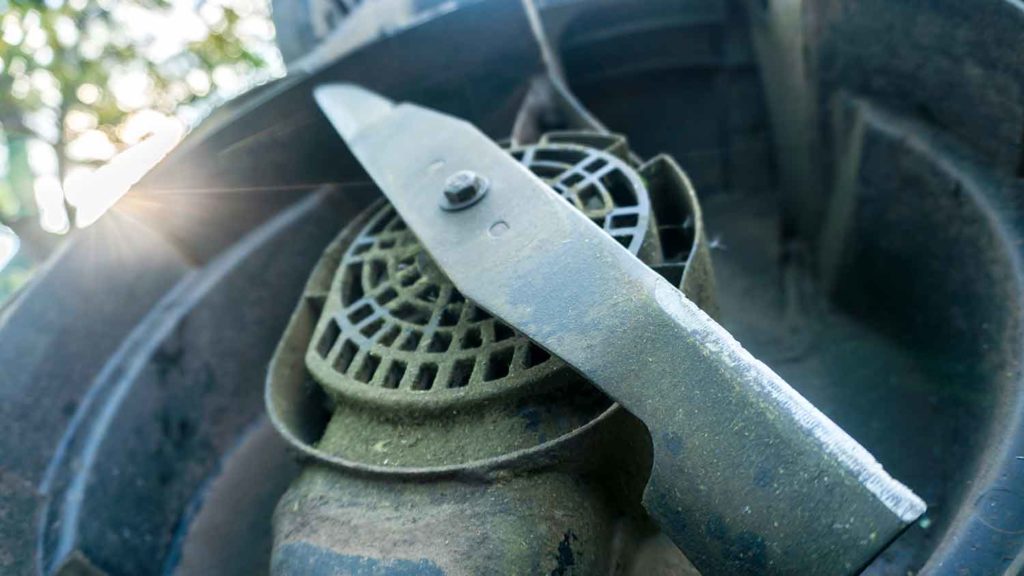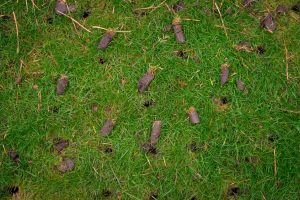
Identifying & Treating Red Thread Lawn Disease

What Does Red Thread Look Like
Identifying red thread is as easy as it sounds — just look for those threads of red! These strands of brittle and reddish-colored turf are the telltale sign of the red thread lawn disease!
What you are actually seeing when you see strands of red turf on your lawn is the sclerotia of this fungal disease. These sclerotia are the overwintering and dormant form of the fungus that causes red thread. When your lawn is thawing out and drying in the sunlight of early spring, the sclerotia will harden and take on a reddish color as opposed to a more cotton-like form.
The red sclerotia are also described as having an antler-like appearance towards the tips of the affected grass blades, and they create the appearance of tangled red threads when observed from a distance. The sclerotia will become hard and brittle if conditions are too dry, and they will turn pink and cotton-like when wet.
- Pink-to-red sclerotia
- Brittle, antler appearance when dry
- Light, cotton look when damp
- Dense matting and tangling
- Patches of thin turf surrounding

Red thread is caused by a species of fungus called Laetisaria fuciformis. This fungus loves high humidity, so it tends to thrive when your lawn has been recently overwatered. Other environmental factors like poor drainage and poor soil fertility can also contribute to the presence of this fungal disease. Basically, red thread is an opportunist, and it seeks out lawns that are too weak and poorly maintained to defend themselves.
Red thread will mainly infect cool-season grass types, but it can be found in lawns all across the country if conditions are ideal. Generally speaking, excessively moist soil within a temperature range of 60 °F to 75 °F is the type of environment that would promote the development of red thread, but it can potentially develop in any lawn when temperatures are between 40 °F and 80 °F. Below is a list of a few more common causes of this fungal lawn disease:
- Mowing too low
- Using unclean equipment
- Poor soil quality/fertility
- Inadequate nitrogen levels
- Improper watering habits

Once red thread begins to spread across your lawn, it will become much harder to eradicate it and save your healthy turfgrass. For this reason, it is important to know how and why the disease is growing. The spread of red thread happens by way of mechanical transfer, mycelium expansion, or a combination of both.
Mechanical Transfer
This is the most common method of spread, and it typically happens when you are using lawn care equipment that has not been cleaned properly. The fungus can easily attach itself to mowers, rakes, or any other type of equipment that comes into contact with an infected lawn. If that equipment is then used on a healthy lawn, it will transfer the red thread spores and infect that turf as well.
Mycelium Expansion
In addition to mechanical transfer, red thread also spreads by mycelium growth. The mycelium is the white, cottony substance you may have seen expanding over newly infected blades of grass. The cotton-like mycelium expands over compromised blades of grass, turns a pinkish color as it hardens, and forms the infamous red sclerotia once it oxidizes and dries completely.
Does Red Thread Kill Grass?
Red thread is a foliar disease, which means it attacks only the leaf of a plant and not the roots or crowns. For this reason, red thread is not commonly considered a “killer” for your lawn, but it can lead to many other complications if steps are not taken to treat an infected lawn. This fungus has the ability to spread quickly and take hold of entire patches of turfgrass in a matter of days or weeks. The infection needs to be addressed as soon as possible in order to avoid permanent damage and patchy areas on your lawn.
Remember! A lawn disease does not have to directly kill your grass to be labeled dangerous. The sclerotia threads created by this fungus tangle together when they are damp, and they harden into a matted mess as they dry. Though the infected grass is not “dead,” the matted turf will lead to issues like compaction, standing water, and other conditions that WILL kill your grass.
Ready To Sign Up? Get Your Quote
Looking to get signed up for service? Learn more about our current services & quickly get a quote for your property.

How To Prevent Red Thread Lawn Disease
Maintaining a healthy lawn to combat red thread after it has developed is really the only way to deal with this lawn disease. While some fungicide treatments can be effective, the matted and tangled nature of this disease makes it an absolute nightmare to deal with once it starts spreading. Below are a few things you can do to ensure a healthy lawn. If you notice the red strands appearing on your lawn, call Elite Lawn Care for assistance!
Test Your Soil:
Red Thread thrives in soils with low nitrogen/fertility. You should aim for a pH level between 6.0 and 7.0 to make sure that your lawn is healthy and ready to defend itself against diseases.
Fertilize Properly:
After testing your soil, you should be able to determine what amendments need to be made to deter lawn diseases. Pay attention to nitrogen levels, as low nitrogen attracts red thread, and add lime to increase pH.
Clean & Sharpen Equipment:
As mentioned, red thread is most frequently transferred via unclean mower blades. Cleaning equipment before every use helps ensure that no fungi are being spread throughout your lawn while you work. Sharp blades are also important on mowers and clippers because mangled, unclean cuts of grass are more susceptible to disease.
Water In The Morning:
Watering your lawn at dawn is the best way to make sure your lawn has enough time to dry off and absorb the water. Watering at night or closer to dusk will result in fungi because your turf will remain wet into the cold and dark hours of the night.
Dethatch:
This is arguably the most important step in preventing red thread, specifically. Accumulated thatch will only add to the matted strands of red thread on your lawn, making it even more difficult to control. Rake leaves and thatch and other organic matter regularly to avoid an even worse infection!
Start Your Quote Today! Getting Started
Get your weekend back & simplify your life this season. Trust Elite Lawn Care for your Lawn Care, Landscaping & Snow Removal needs.
-
1Choose Your ServicesChoose the services your property needs throughout the year.
-
2Set Up & Finalize Your AccountFill out the form & one of our team members will contact you.
-
3Discover The DifferenceServices are automatically scheduled, completed & billed.










